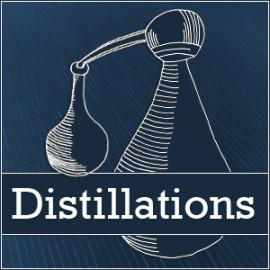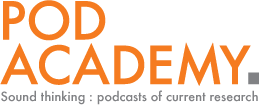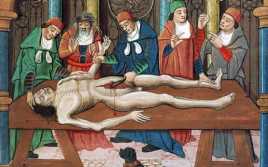A sonic impression of a panic attack
Read MoreAudio: Oxford Sparks - Big Questions Podcast
A sonic exploration into the sciences at the University of Oxford
Read MoreAudio: The History and Development of Chemotherapy Drugs
Distillations Podcast: The History and Development of Chemotherapy Drugs

Back over the summer I recorded an interview with Dr Viviane Quirke of Oxford Brookes University about the history and development of cancer chemotherapy drugs. The piece was recorded for the Chemical Heritage Foundation's brilliant and award winning podcast 'Distillations' - which has sadly now come to an end.
The piece was edited by Mia Lobel and can be listened here:
http://www.chemheritage.org/discover/media/distillations/181-chemotherapy.aspx
The episode also features a very personal story by producer Christine Laskowski who looks at her father's cancer treatment with a drug called Cisplatin - a drug that was developed in the 1970s and despite very nasty side-effects - is still used to treat cancer today.
If you don't already listen to the podcast, it's well worth checking out the Distillations back catalogue - with close to 200 episodes - there's some great stuff there waiting to be listened to: http://www.chemheritage.org/discover/media/distillations/index.aspx
Podcast for D&AD: Imagined Landscapes
Creating a sense of place through sound - a collection of audio shorts for the D&AD Inspired by Audio website.
Read MorePod Academy - In The Morgue
 I've recently started producing podcasts for a new non-profit organisation called Pod Academy - they release weekly podcasts on academia and research, covering everything from the arts and culture to science and the environment. There's a really nice range of subjects covered by the podcasts and their library is growing on a weekly basis. You can browse what they have to offer here.
I've recently started producing podcasts for a new non-profit organisation called Pod Academy - they release weekly podcasts on academia and research, covering everything from the arts and culture to science and the environment. There's a really nice range of subjects covered by the podcasts and their library is growing on a weekly basis. You can browse what they have to offer here.
Auto-erotic Asphyxiation
 My latest offering takes a trip around the morgue of the Sunderland Royal Infirmary, with pathologist Dr Stuart Hamilton as a guide. The piece provides a glimpse into mortuary life, from working with the dead on a daily basis, to dealing with cross dressing 'auto-erotic asphyxiation' fatalities.
My latest offering takes a trip around the morgue of the Sunderland Royal Infirmary, with pathologist Dr Stuart Hamilton as a guide. The piece provides a glimpse into mortuary life, from working with the dead on a daily basis, to dealing with cross dressing 'auto-erotic asphyxiation' fatalities.
You can listen to the piece over at the Pod Academy website here. Or download it here. The piece takes material recorded for my larger documentary piece 'The D-Word'.
If you want to stay up to date with the podcasts you can subscribe to their podcast feed via iTunes.
Sounds of Science #03
EchoBank
In this Episode I visit Dr Kate Jones at the Zoological Society of London to find out about a bat call reference library they're developing called 'Echobank' which is being used in conjunction with the iBats monitoring program. Scientists at the Zoological Society of London are using Echobank to teach a neural network to identify specific bat species from the acoustic properties of their calls.
Although this may sound pretty niche, it's really cool stuff because the technology has much wider applications. Firstly the team are using it in combination with a smart phone app which can be used by anyone to take bat call recordings. In doing this the team hope to collect global distribution data for bat populations, which Dr Jones is hoping to use to determine whether bats can be used as a 'heart monitor' for the state of the environment. As bats represent one fifth of all mammalian species and exist in a huge range of habitats (from your local park to the tropics), changes in their global distribution could be used to monitor the impact of climate change on the natural world.
Secondly, the team are doing a lot of really important science engagement, working with ‘citizen science’ networks across Europe to gather data on bat populations. The team have been helping groups across Europe to develop and carry out their own monitoring programs, which feed data back to the iBats program. What’s great about this work is that it’s not only efficiently collecting distribution data, but also getting people interested in the state of their local environment. Standardisation is obviously an important factor when collecting data from multiple sources and with this in mind the team have developed the smartphone apps which can be used easily to take recordings and GPS data.
Finally (and what really excited me) was the suggestion that this ‘digital infrastructure’ could one day be adapted to identify any sound producing species from a recording taken on a smartphone. So imagine going out to your local park, taking a recording of a bird on your iPhone and getting probability results back on the identification of the species!
You can listen to the episode here:
[soundcloud width="100%" height="81" params="" url="http://api.soundcloud.com/tracks/11704888"]
Or listen to the edited version as part of Short Science episode 89
Special thanks to Katie Draper who helped out with this episode!





